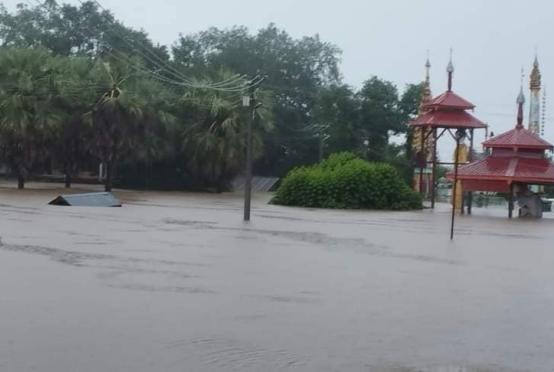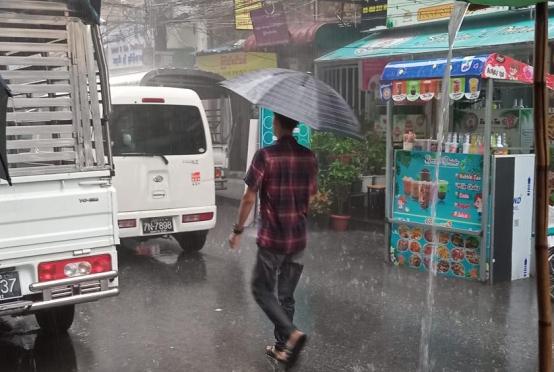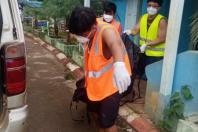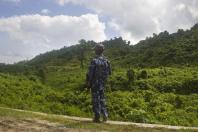
The effects of Cyclone Fani, one of the strongest storms to hit the Indian subcontinent in two decades, are being felt in Nepal. Even though the cyclone is hundreds of miles away from Nepal--on the east coast of India and western Bangladesh--strong winds believed to be a result of the cyclone blew away tents on the Everest Base Camp. Authorities have asked climbers, who were acclimatising at the Base Camp, to halt all activities at least until Saturday.
According to Mira Acharya, director of the Hotel and Mountaineering section under the Department of Tourism, nearly 20 tents set up at the Everest Base Camp were blown away by the windstorm.
The cyclone, which originated in the Indian Ocean and swept across India’s coastal states, has forced mountaineers preparing to climb Everest and other summits to retreat in the face of impending danger.
The department also issued an emergency notice, asking all trekking agencies and support staff to take local weather into consideration, keep climbers safe and protect them from any possible harm.
“We have received reports of some tents being damaged in the strong wind, but all the climbers and their support staff are safe,” Acharya told the Post. “We have alerted all agencies to keep their clients [mountaineers] safe and suspend their plans until the weather improves.”
Following reports of the approaching cyclone and worsening weather conditions, the department had started issuing warnings to climbers and agencies as early as Thursday.
Climbing begins from mid-May, but mountaineers spend time on the lower reaches of the Himalayas, acclimatising themselves before attempting the summit. On Everest, climbers acclimatise at Base Camp (5,364 metres) and Camp II (5,943 metres), moving up and down to prepare themselves for the final push.
Tika Ram Gurung, general secretary of the Nepal Mountaineering Association, told the Post that since weather conditions deteriorated, all climbers and staff have descended to the Base Camp.
On Friday morning, Cyclone Fani, thought to be the strongest storm in the subcontinent in the last two decades, made landfall in Odisha, an Indian coastal state. The storm, initially categorised as “extremely severe”, reportedly killed at least three people in Odisha and forced the state government to evacuate more than a million people to safer spaces. Since landfall, the cyclone has been downgraded to “very severe” and has been moving slowly towards West Bengal and Jharkhand before reaching Bangladesh.
Acharya said that given the severity of the storm, the authorities had asked trekking agencies to bring back their climbers. “However, we received reports that many climbers were reluctant to return,” said Acharya. “So we asked them to stay safe at the Base Camp and stop moving around. We have also asked mountaineers planning to climb other peaks to also wait until the weather improves.”
In addition to the winds on Everest, eastern Nepal too saw strong winds coupled with with light to moderate rainfall.
According to Barun Paudel, senior meteorologist at the Meteorological Forecasting Division, parts of the country will see ‘peripheral effects’ of the storm. The division has issued two special bulletins for Cyclone Fani.
“Nepal will not have direct impact from the cyclone, but it will partially impact our weather systems, primarily in the eastern part of the country,” said Paudel. “There is no reason to panic.”
Rainfall in Okhaldhunga, Taplejung and Morang has been attributed to the cyclone, and more rains, thunderstorms and windstorms in parts of eastern and central Nepal are expected on Saturday. Some areas are likely to receive heavy precipitation until Sunday, according to the bulletins.
“Climbers should be careful as weather is likely to worsen in the mountainous region,” Paudel said. “They [climbers] should stop at least until Sunday.”
The weather office too has warned climbers to stay safe, as there is bound to be medium to heavy snowfall on Saturday. The weather will only start improving in the eastern parts of the country from Monday, said the office.
In a separate notice, the National Emergency Operation Centre, under the Ministry of Home Affairs, also asked the stakeholders to suspend all helicopter flights till Saturday due to the possibility of heavy snowfall.
According to the tourism department, a total of 378 fee-paying climbers and 41 teams-- 35 foreign and six Nepali--have received clearance to scale Everest this spring. The teams include as many as 730 supporting staff, comprised of climbing guides, high altitude sherpas, and kitchen help.
Since the climbing season started, there were also concerns over traffic on Everest, which usually happens in the event of an erratic weather.
Normally, there is a two-week window for Everest summiteers to complete their climb before monsoon begins.
An active pre-monsoon this year has already left climbers worried about a narrow summit window, which they fear might leave with just around a week for the expedition. The impact of Cyclone Fani has now already taken away two crucial days.
Authorities and climbing experts, however, said the current wait will not cause a major delay in the expedition and will likely not lead to any traffic jam.
“It will not make a big difference. The weather is expected to improve in a couple of days, and it will be normal routine then,” said Gurung. “The summit can be reached in 10-12 days and mountaineers can climb till the end of May.”
Acharya of the tourism department backed Gurung’s statement.
“There is no chance of a traffic jam as we began slightly earlier this year. Also, we started rope fitting up to Camp II earlier and completed up to South Col by Friday,” said Acharya. “Our plan is to complete rope fitting up to the summit by May 13. The two-day disturbance will not delay progress, but we have yet to see how long this bad weather continues.”















